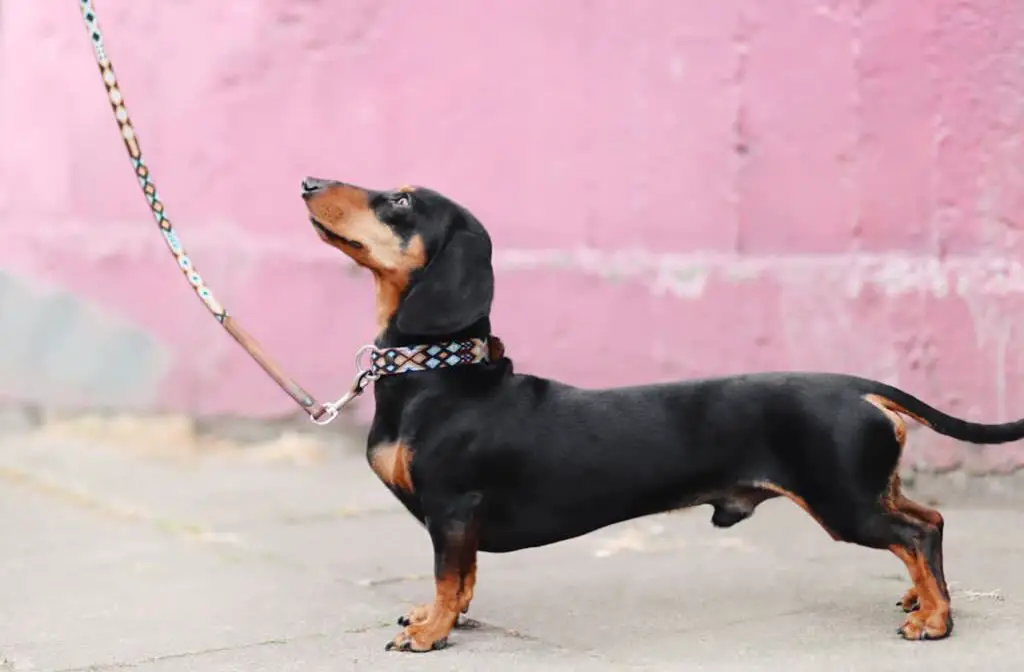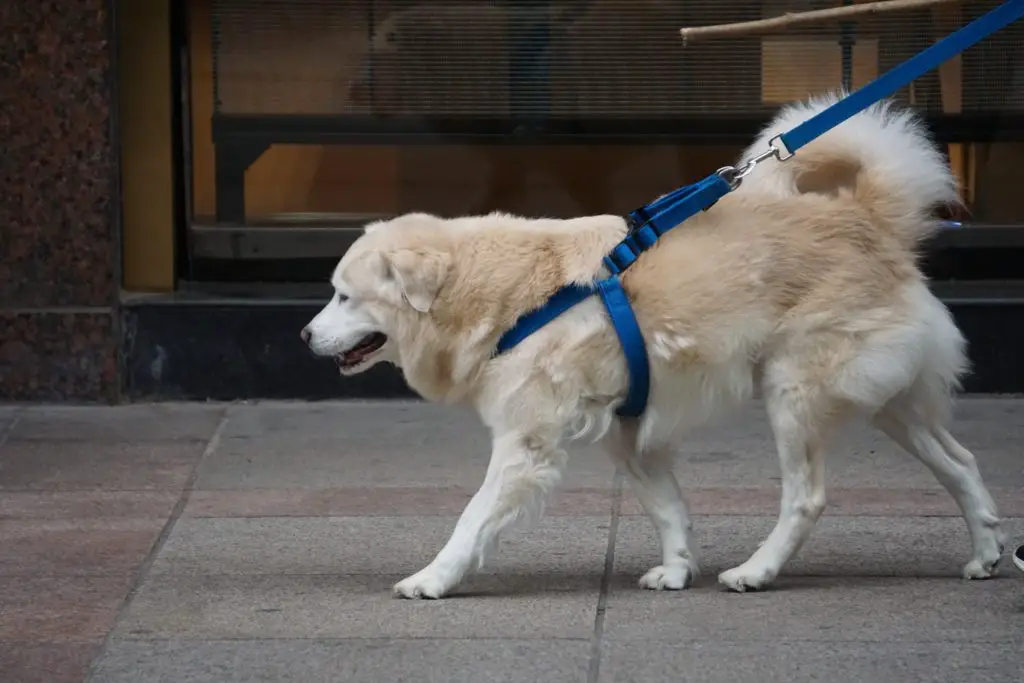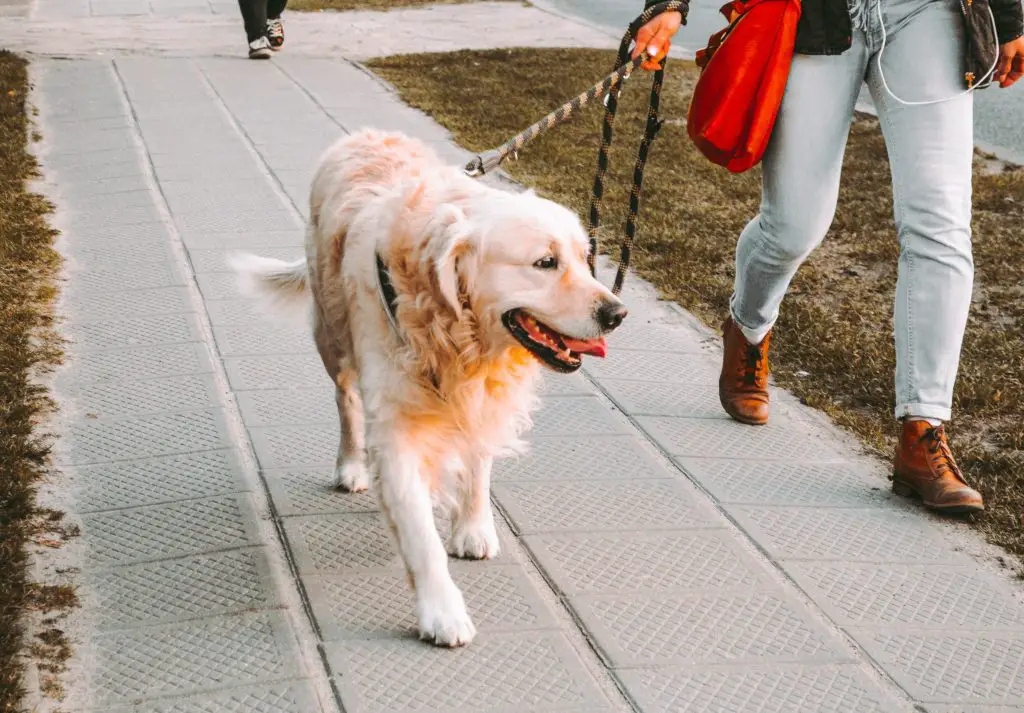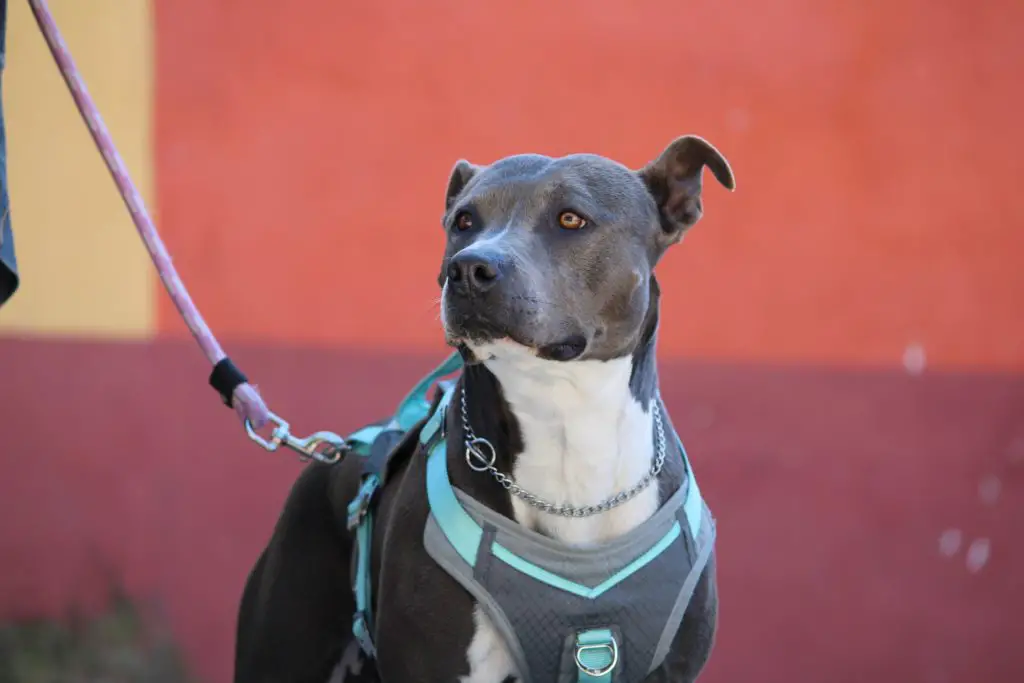Collars and leashes are part of a dog’s life. You want wearing both to be a positive experience for your dog. It’s important when learning how to train your dog to walk on a leash that you introduce both collars and leashes positively.
Dogs come with their own personalities, meaning that some dogs take two seconds to get used to a collar and walking with a leash attached, while others need specific training and time.
In How to Train Your Dog to Walk on a Leash we will give guidelines for introducing the collar and leash, the importance of a leash, and how to walk nicely on a leash.
Every dog regardless of size will need to be comfortable having a leash attached to its collar or harness. New puppies and adopted dogs have much to learn from you. Enjoy the process of training a new dog on how to walk on a leash.
Related Articles:
- Ultimate Guide: How To Take Care Of A Puppy
- Ultimate Guide: How To Take Care Of A Dog
- Ultimate Guide: How To Take Care Of A Senior Dog
- The Benefits of Owning a Dog
- Top 12 Tips for First Time Dog Owners
- How to Train a Dog

How to Train Your Dog to Walk on a Leash: Introducing the Collar
Your new puppy or dog more than likely will have started wearing a collar before they came into your life. However, do not assume that because they have a collar on or have worn one before that they are collar trained.
Here are a few tips to help your dog become more comfortable with the process of having their collar put on every day. You will need kibble or treats for this exercise.
Only use kibble if your dog LOVES his meals. Otherwise, chose a treat that they would find pleasant. If your dog is not food motivated at all, use praise.
Introduce Collar. Hold the collar in one hand and treats in the other. Let your dog smell the collar. Treat your dog. Repeat.
- Once your dog has become comfortable with the idea of a collar, put it around their neck. Treat them. Remove the collar.
- Increase the duration your dog wears the collar. Treat them. For some dogs, playtime with you is rewarding and distracting at the same time. Either way putting on their collar is a positive experience.
- Remove the collar when they are distracted or relaxed. Repeat several times a day.
Now that your dog has been introduced to the collar and is comfortable wearing one, we will move on to introducing the leash.
Related Articles:
- How to Treat a Dog Ear Infection at Home without a Vet
- How to Play with Your Dog
- Rules of How to Walk Your Dog
- Tips for First Time Dog Owners
How to Train Your Dog to Walk on a Leash: Introducing the Leash
Before we can get into how to train your dog to walk on a leash, your dog needs to be comfortable with the leash attached to their collar.
Attach the leash and praise your dog. Unclip it. Repeat. Once comfortable take a few steps.
Walk Backwards. The first time you attach the leash to the collar, walk backwards allowing your puppy to follow you. Praise your dog.
Less Distractions. It can be easier if you begin in a location with fewer distractions. Often starting in your home first and then moving outside works well.
Not a Toy. It is important to remember the leash is not a toy. Once your dog thinks it is okay to chew or play around with the leash, your job will become more difficult. After you are done working with your dog, remove the leash.
Before we get into how to train your dog to walk on a leash, practice attaching the leash to the dog’s collar and taking a few steps. One way to practice getting comfortable with the leash is to use it for potty breaks.
Related Articles:
- A Review of the 5 Best Dog Muzzles
- A Review Of The Top 5 Best Dog Clickers
- How to Build an Outdoor Dog Potty Area on Concrete
- How to Cook Marrow Bones for Dogs
After the dog wakes from a nap is a good time to take them out with the leash on. The dog will be focused on eliminating and not on fussing with the leash. Over time your dog will associate their collar and the leash with enriching activity.

How to Train Your Dog to Walk on a Leash: The Necessity of Leash Training
Your dog needs to feel comfortable wearing both a collar and leash. After introducing both to your dog, they know that good experiences follow when they have their collar and leash on.
Seven reasons why you want to leash train a dog:
- A 4-6-foot leash is required within many cities and parks
- Veterinarian appointments
- Courteous to neighbors
- Travel – rest areas, campgrounds, hotel dog walk areas.
- Companionship or connection with your dog
- Prevent injuries to your pet
- Keeps them away from injuring or getting injured by a wild animal
Basically, it is necessary to learn how to train your dog to walk on a leash. The best time to begin is the first week the dog joins your home.
Related Articles:
- How to Treat a Dog Ear Infection at Home without a Vet
- How to Play with Your Dog
- Rules of How to Walk Your Dog
- Tips for First Time Dog Owners
How to Train Your Dog to Walk on a Leash
Your dog is comfortable with the collar and leash now you both are ready to learn how to train your dog to walk on a leash. We can see the importance of dogs learning to walk with a leash on, but even more crucial is that they learn to walk nicely.
Walking nicely, without pulling and lunging on the leash, will keep you and your dog safe. When your dog is by your side, they will not have the opportunity to pull during a walk around the neighborhood.
Another way a dog can walk with us in the “heel” position. Performance dogs that participate in obedience competition need to have a perfect heel. Each dog owner needs to decide what they expect of their dog; walk nicely without pulling or walking in the heel position by my side.
- If using food to train and praise your dog, fill your pockets with small, tasty treats.
- Decide on a word that means walk with me; like “heel”, “walk”, “with me” – whatever you decide be consistent with using that word. Please do not use the word before the dog knows what it means.
Related Articles:
- Basic Dog Training Commands
- How to Properly Carry a Dog
- How To Take Care Of A Puppy
- How To Take Care Of A Dog
- How to Obedience Train Your Dog

Technique for Walk Nicely Position – How to Train Your Dog to Walk on a Leash
Start with your dog paying attention to you by giving you eye contact.
- Lure them with a tasty treat to your left side near your leg. Place the treat in your left hand & the dog’s leash in your right. Your hand will be making a C, starting at the top of the C and going wide and ending at the bottom of C with the dog stopping near your left knee area. Treat your dog.
- Once you have your dog on your left side take a step forward. Is your dog focused on you? Treat your dog. Try two steps forward. Treat if they stay focused and do not pull.
- Move Slowly. For each step, treat your dog. If your dog begins to walk too fast or wants to get ahead of you, take a step backward to get their attention.
- When walking near a high distraction, begin treating your dog more frequently. The goal is to have them focused on your location during the walk.
- In the beginning you will want your dog to check in with you frequently. Call their name or “come” and when they move by your side, treat.
- Give praise and treats generously in that first year your dog is learning to walk nicely.
Related Articles:
- How to Get the Attention of a Deaf Dog
- How to Train a Deaf Dog to Sit and Stay
- How to Train a Deaf Dog with Hand Signals
- How to Potty Train a Deaf Dog
Technique for Heel Position – How to Train Your Dog to Walk on a Leash
- Begin by walking backward with your dog following in front of you. Be exciting and worth following! Treat your dog for focusing on you.
- Keep walking backwards with your dog’s focus on you and a loose leash. While in motion, pivot around so your dog is on your left side. Treat your dog.
- The placement of the treat is crucial if you want a dog that is close to you and in heel position. Treat where you want your dog to be, so for a large size dog like a Labrador retriever, you will treat just above your knee.
- Pivot back around so that your dog is following you again. While in motion, pivot so that your dog is in the heel position. Again, treat your dog in the exact position you would like them. Location is important to a dog.
- Heel position is having the dog’s shoulders even with the handler’s leg, allowing the dog to give eye contact.
- Once your dog is consistent with the heel position, you can name it “heel”. Treat.
When you begin again, you start your dog in a stationary “heel” position.
Start with your dog paying attention to you by giving you eye contact. Lure them with a tasty treat to your left side in a heel position. Your hand will be making a C, starting at the top of the C and going wide and ending at the bottom of C with the dog following and ending near your left knee area.
Related Articles:
- A Review of the Top 5 Best Brooms For Dog Hair
- A Review of the 5 Best Peanut Butters for Dogs
- A Review of the 4 Best Dog Shampoos for Itchy Skin
- A Review of the 5 Best Dog Brushes For Short Hair
- A Review of the 6 Best Dog Harnesses for Hiking
- A Review of the 5 Best Slow Feed Dog Bowls
- A Review of the 5 Best Retractable Dog Leashes
- A Review of the 5 Best High Fiber Dog Foods For Anal Gland Problems
- The 5 Pawsitively Best Dog Nail Grinders
How to Train Your Dog to Walk on a Leash: Commonly Asked Questions
Q. Why is “heel” on the left side?
A. It’s a tradition that allowed for handlers to keep their right hand free. The dog’s leash would be in the left hand. The roots of this tradition go back to when owners would hunt with their dogs, the dog was on the left allowing for the hunter to have their firearm in their right hand.
People that show their dogs in conformation or obedience categories must show with their dog on the left. Otherwise, you can choose which side is most comfortable to you.
Q. What if my dog leans away from me while on the leash?
A. This is commonly referred to as opposition reflex, which is essentially describing a dog that is using their natural tendencies to oppose a force. The force being you wanting them to move in your direction.
The solution to your dog pulling away from you is to stop immediately. No need to apply more pressure to the leash. Once your puppy relieves the pressure and comes to your side, praise and treat them.
Go back to the steps of how to train your dog to walk on a leash and practice. Practicing frequently when your dog is young will give you many years of walking nicely on leash.
Related Articles:
- A Review of the Top 5 Best Dog Bones For Aggressive Chewers
- How to Get a Picky Dog to Eat
- A Review Of The Top 5 Best Bone Broths for Dogs
- How to Keep Your House from Smelling like Dog
Q. How do I handle high distraction moments when there is potential for my dog to pull?
- Common distractions for dogs are other dogs, squirrels, food tossed by the walkway/road, and other people, specifically children. When you see a potential distraction, get your dog’s focus on you. Begin treating your dog. Once the distraction is past, stop treating. This will remind your dog they get better rewards focusing on you rather than the distraction. Often, it’s easier to do when you stop moving, position your dog in front of you, and begin treating.
Q. My dog was walking nicely on a leash until adolescence, what do I do?
A. Go back to the steps of how to train your dog to walk on a leash. Start from the beginning. Your dog’s brain is changing the first two years of their life. They need reminders and reinforcement.
The time you carve out of your life to learn how to train your dog to walk on a leash will reward both of you for many years to come.

How to Train Your Dog to Walk on a Leash
Many of you are aware that every dog is different. You can get a general breed description and find out which dogs are easier or more challenging to train. Some dogs are genetically inclined to work hard and are motivated learners.
All dogs vary in intelligence, but all dogs are trainable. Choose a breed(s) that fits your time schedule and lifestyle. Dogs that were bred to work cooperatively with human partners will train on a leash differently than those breed to work independently.
The keys to how to train your dog to walk on a leash are introducing the collar and leash in a manner that signifies positive activity. Leashes are a necessary piece of equipment for dog owners. Get to know the leash laws where you walk and recreate.
Choose what you are going to expect from your dog and train accordingly.
Lastly, go into leash training with knowledge of how to do it correctly, plan to treat and praise your dog, and remember it is time well invested in your dog.
Relevant Articles:
- A Review of the 5 Best Dog Muzzles
- A Review Of The Top 5 Best Dog Clickers
- How to Build an Outdoor Dog Potty Area on Concrete
- How to Cook Marrow Bones for Dogs
Please read our Legal Disclaimer

